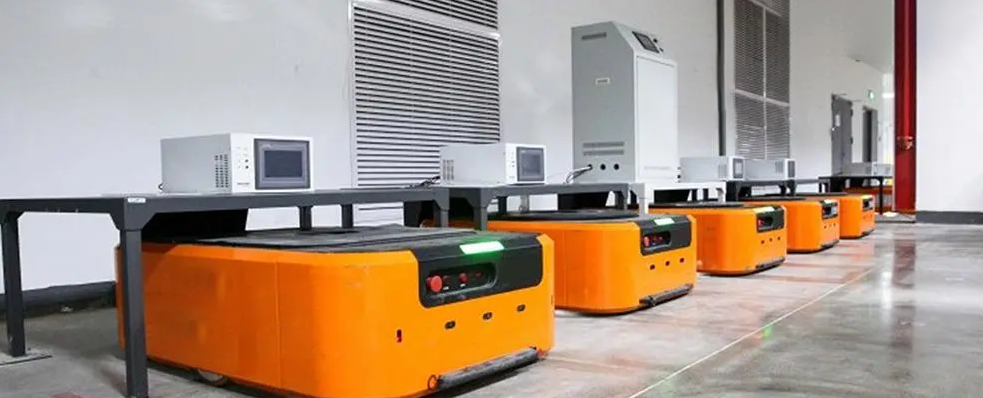
Practices
AGV in Automobile Parts Factory Logistics
Time:2023-02-20 Source: Click:
Application Case of AGV in Auto Parts Factory Logistics
1 Introduction of AGV Material Handling System
AGV is the abbreviation of Automated Guided Vehicle. The AGV is equipped with an automatic guiding device (electromagnetic or optical, etc.), so that it can drive along the specified guiding path, and has the functions of safety protection and various material handling. It can replace traditional material handling equipment such as forklifts and trailers, and achieve less Humanized operation.
2. Application of AGV in the automotive industry
The automotive industry is an industry with a high application rate of AGV. At present, the demand for AGVs in the world's automotive industry still dominates. With the current vigorous development of the automobile industry, in order to improve the level of automation while achieving the goal of less people and low cost, in recent years, many automobile manufacturers have applied AGV technology.
The application of AGV in the automotive industry is mainly reflected in the automatic and flexible assembly of the engine, rear axle, gearbox, chassis and other components of the main engine plant, as well as the online feeding of parts. Especially for the latter, because the assembly workshops of OEMs are generally very large, and often require a large amount of long-distance material handling, AGV is very useful in replacing forklifts and trailers for material handling, and can realize the scale cost advantage of batch replacement, which has obvious advantages economic effect.

The example to be studied in this paper is a component factory (Factory A for short) that supplies supporting products to an OEM. It is located in an economically developed coastal area. Factory A is located in the supplier park of the OEM. The factory covers an area of about 10,000 square meters m, with two production lines, functionally, the factory area can be divided into parts delivery and storage area, production line, finished product storage area and finished product delivery area.
The logistics process is briefly described as follows:
Step 1: After the forklift unloads the raw materials from the supplier's delivery vehicle, it is transferred to the parts storage area for storage;
Step 9: The forklift unloads the material box returned from the OEM, and then transports it to the production line by the forklift.

In the above logistics process, all material handling and loading and unloading are done by forklifts. Due to the relatively large business volume, a total of 16 forklifts are equipped, including 2 for parts receiving and storing operations, 5 for feeding on-line and empty return boxes, 5 for finished product off-line and empty return boxes, 2 for finished product storage, and finished product delivery 2 cars. At the same time, due to working 2 shifts a day, the total number of forklift workers reached 37.
In recent years, there has been frequent rising pressure on labor costs, and the labor cost of front-line forklift workers has increased by 10% every year; not only that, because factory A implements two-shift production, the labor load is quite heavy, and the turnover rate of forklift workers has been hovering at a high level. Before and after the Spring Festival, the labor shortage could not be effectively resolved, and it faced the risk of stopping production many times.
In order to solve the problems of rising costs and labor shortages, the decision-making level of factory A decided to use AGVs instead of forklifts in the logistics of the factory on the basis of detailed research on the application of AGVs in China.
If any interested about AGV in auto parts factory logistics, please dont hesitate to contact us
Email: pennywang@wiiis.com
Phone/WhatsApp: +86-17338110287
Previous:No article!







 pennywang@wiiss.com
pennywang@wiiss.com

 0086 17338110287
0086 17338110287 